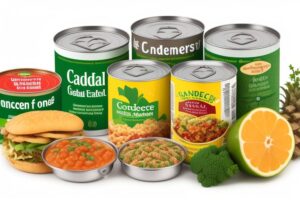A Journey Through Indian Sweets: Flavor and Culinary Delight
Indian sweets, known as mithai, are an integral part of India’s culture, traditions, and celebrations. Whether it’s a wedding, religious festival, or simply a gesture of hospitality, Indian sweets always hold a place of honor. From the melt-in-the-mouth gulab jamun to the flaky layers of soan papdi, each sweet tells a story of the region it comes from and the traditions that shaped it.
A Sweet Legacy: The Role of Mithai in Indian Culture
Indian sweets are more than desserts—they are symbols of happiness, gratitude, and celebration. They are offered during religious rituals, exchanged as gifts during Diwali and Eid, and enjoyed as a treat after meals. Almost every region in India has its own unique sweets made with ingredients like milk, lentils, nuts, ghee, and jaggery.
These sweets are often handmade in traditional ways, using recipes passed down through generations. In Indian households, preparing sweets is a cherished ritual during festive seasons and family gatherings.
Regional Delights: The Diversity of Indian Sweets
1. North India – Rich and Creamy:
North India boasts an array of milk-based sweets. Rasgulla and rasmalai from West Bengal (which shares culinary traditions with eastern India), kalakand from Rajasthan, and peda from Uttar Pradesh are just a few examples. One of the most iconic is gulab jamun, deep-fried dough balls soaked in sugar syrup.
2. South India – Nutty and Flavorful:
South Indian sweets often feature coconut, jaggery, and rice flour. Mysore pak, a ghee-rich fudge, hails from Karnataka, while unni appam and payasam are staples in Kerala. The Tamil Nadu favorite, rava kesari, is a semolina-based sweet with saffron and cardamom.
3. East India – Light and Juicy:
Bengal and Odisha lead with sweets like sandesh, chhena poda, and rasgulla. These are usually made with fresh paneer (chhena) and are known for their soft texture and delicate sweetness. Their light, milk-based nature makes them perfect for warm climates.
4. West India – Nutty and Textured:
Gujarat and Maharashtra are known for their dry sweets like shrikhand (sweetened yogurt), basundi, and various types of barfi. Goan sweets like bebinca also reflect a Portuguese influence, showcasing the fusion of flavors in Indian cuisine.
Popular Indian Sweets You Must Try
- Gulab Jamun: Soft balls made from milk solids, deep-fried and soaked in rose-flavored syrup.
- Jalebi: Deep-fried spirals soaked in saffron-infused sugar syrup.
- Ladoo: Round balls made from flour, ghee, and sugar—often flavored with nuts or coconut.
- Kaju Katli: Diamond-shaped cashew fudge, rich and buttery.
- Barfi: Dense milk-based sweet, often flavored with pistachio or coconut.
- Halwa: A warm, ghee-laden dessert made from semolina, lentils, or carrots.
Sweets and Rituals: Sacred Offerings
In temples, Indian sweets are often prepared as prasadam—sacred offerings to deities. These are later distributed to devotees, symbolizing blessings and divine favor. Festivals like Janmashtami, Ganesh Chaturthi, and Navratri feature specific sweets made as traditional offerings.
Traveling for Taste: Prepare with the Right Visa
If you’re planning to explore the rich world of Indian sweets in their place of origin, make sure you’re well-prepared with your travel documents. The Indian e-Visa is a convenient option for many international travelers.
To ensure a smooth application process, review the official INDIAN VISA PHOTO REQUIREMENTS and INDIAN VISA DOCUMENT REQUIREMENTS before you begin. A correctly submitted visa application helps avoid delays and allows you to enjoy your sweet journey without any hiccups.
Conclusion
From ancient temples to modern-day patisseries, Indian sweets continue to evolve while holding on to their traditional roots. They represent love, joy, celebration, and heritage in every bite. Whether you’re indulging in a hot jalebi on the streets of Delhi or savoring payasam in a Kerala home, Indian sweets promise a memorable experience.














Post Comment